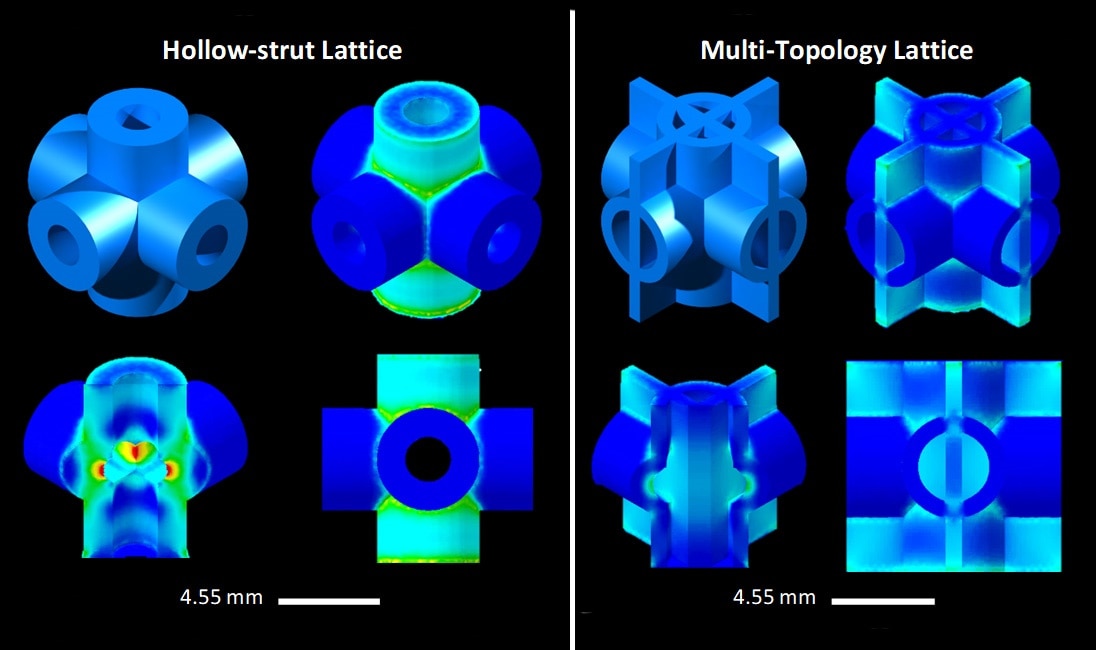
A sample of the new titanium metamaterial in a cube form. (Image Credit: RMIT University)
RMIT University researchers recently created a new high-strength and lightweight titanium material using Ti6Al-4V, a common titanium alloy. They believe it could be used in medical devices, vehicles, and spacecraft designs. Its lattice structure is what makes the metamaterial so unique --- it’s 50% stronger compared to cast magnesium alloy that’s used for aerospace applications.
To create the titanium metamaterial, the team designed a digital model of the lattice metamaterial sample. Afterward, they leveraged laser powder bed fusion, a 3D printing technique that uses a high-power laser to print a material layer by layer. What happens here is the metal powders melt, turning into liquid metal that solidifies before getting heated and cooled repetitively. It takes approximately eighteen hours to complete this process, but the team hopes to shorten that time by optimizing it.
As a result, the titanium metamaterial is corrosion-resistant, can survive high temperatures, and has high strength. Those qualities are very similar to Wolverine’s adamantium – the fictitious indestructible metal from Marvel comic fame. But does it hold up the same way?
The metamaterial has two topologies: hollow struts and thin plates that make it very strong. Both lattices evenly spread stress and simultaneously support the structure. Additionally, the topology design deflects crack paths to improve toughness, and that means the struts and plates redirect the cracks on a longer path.
The team tested their titanium lattice cube design, showing that it’s 50% stronger than cast magnesium alloy WE54, the strongest alloy that has similar density. This structure decreased the amount of stress concentrated on the weak points by 50%.
“Compared with the strongest available cast magnesium alloy currently used in commercial applications requiring high strength and lightweight, our titanium metamaterial with a comparable density was shown to be much stronger or less susceptible to permanent shape change under compressive loading, not to mention more feasible to manufacture,” Study lead author and RMIT PhD candidate Jordan Noronha said.

The left side shows the hollow strut stree concentrations in red and yellow. Meanwhile, the right side shows the double lattice structure, which distributes stress more evenly to avoid hot spots. (Image Credit: RMIT University)
The team plans to commercialize this titanium metamaterial. But before doing so, they want to make it lighter and stronger so that it performs at its best. In this case, they plan to use numerical simulations to change the ratio of thin plates to hollow struts, enhancing the structure’s stress spread. Fabricating the metamaterial from a high-temperature titanium alloy would make it practical for use where temperatures reach 600°C. That makes it ideal for applications like missiles or high-speed flying aircraft that must survive extreme heat produced by high speeds. Wildfire fighting drones could also take advantage of this material due to its high strength, lightweight, and heat-resistant qualities.
It also has potential applications for medical devices like bone implants. However, adopting it for this purpose might take a bit longer because the technology isn’t widely available. “Traditional manufacturing processes are not practical for the fabrication of these intricate metal metamaterials, and not everyone has a laser powder bed fusion machine in their warehouse,” Noronha said. “However, as the technology develops, it will become more accessible and the printing process will become much faster, enabling a larger audience to implement our high-strength multi-topology metamaterials in their components. Importantly, metal 3D printing allows easy net shape fabrication for real applications.”
Have a story tip? Message me at: http://twitter.com/Cabe_Atwell
